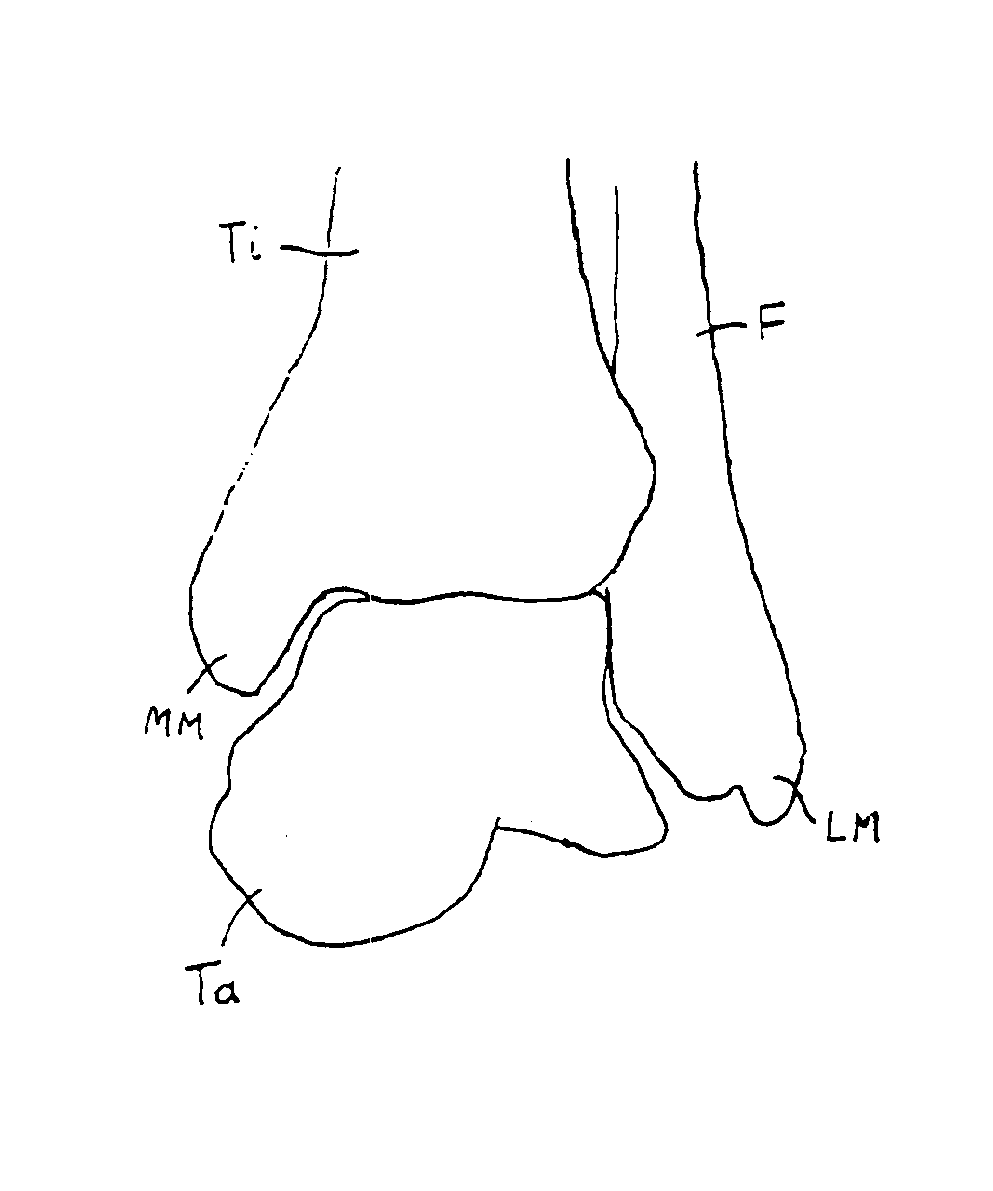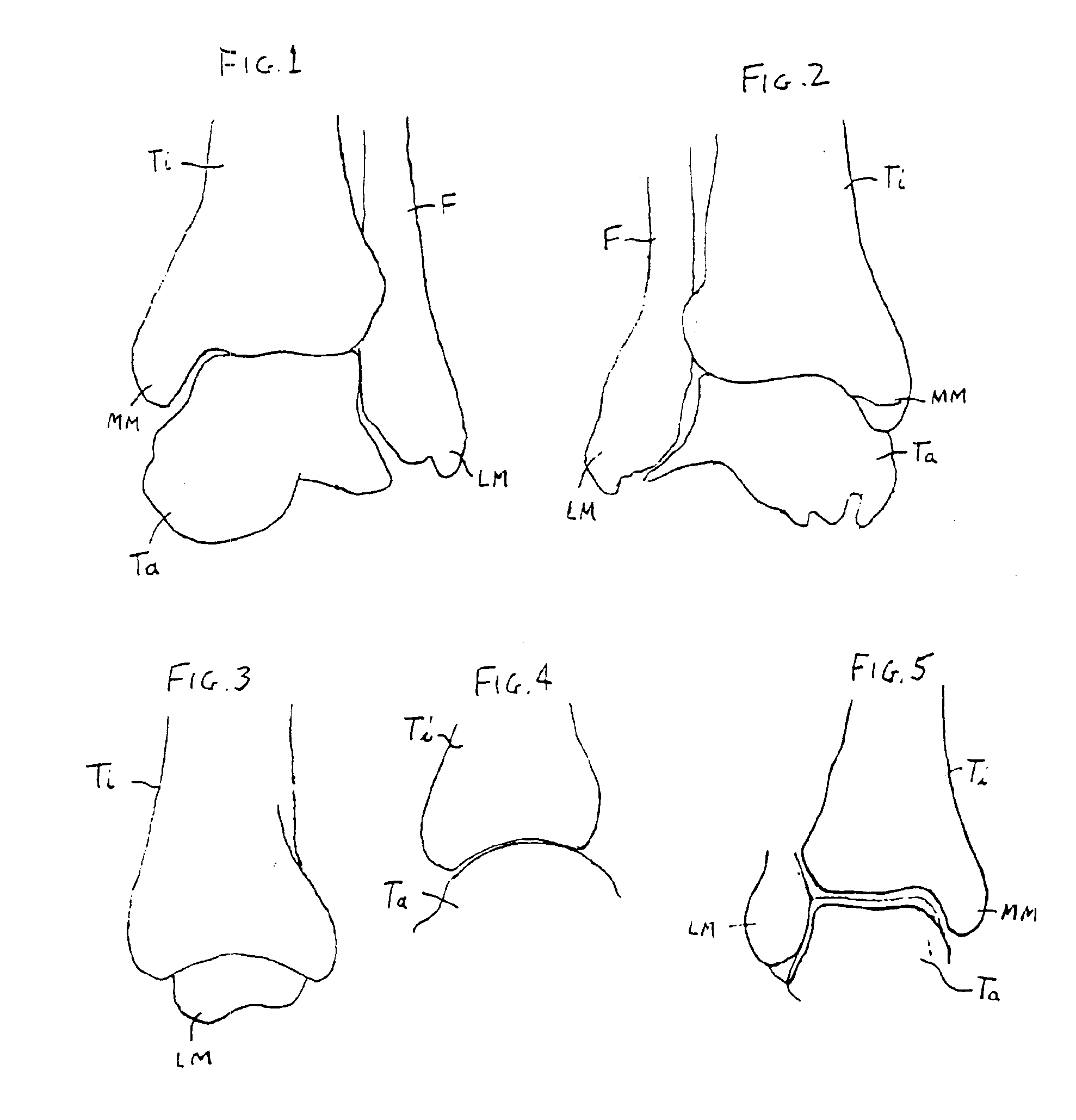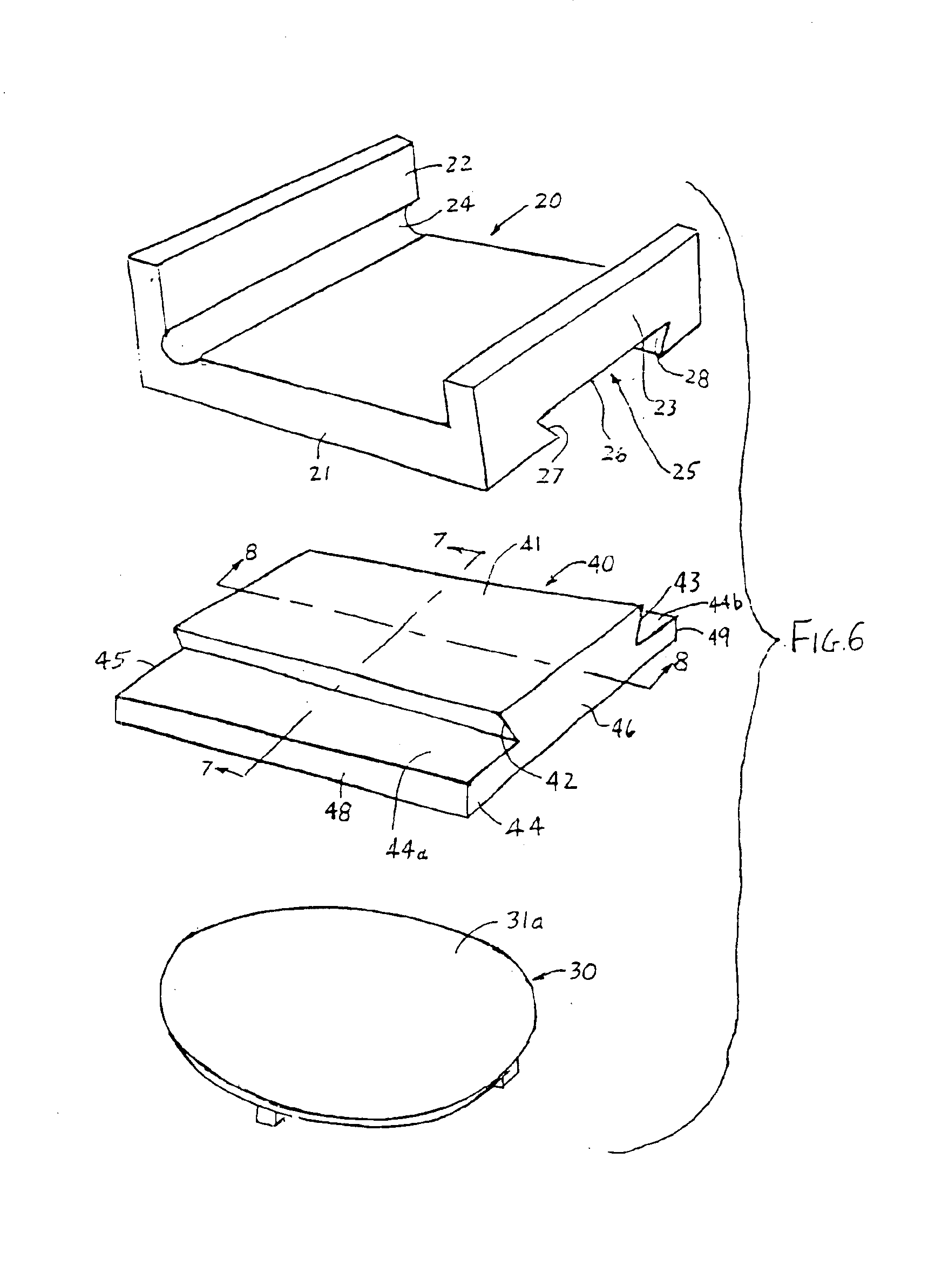Ankle implant
a technology of implants and ankles, applied in the field of implants, can solve problems such as bone fractures and bone weakening, and achieve the effect of reducing pain
- Summary
- Abstract
- Description
- Claims
- Application Information
AI Technical Summary
Benefits of technology
Problems solved by technology
Method used
Image
Examples
Embodiment Construction
Before explaining the present invention in detail it is to be understood that the invention is not limited in its application to the particular arrangement shown and described herein since the invention is capable of other embodiments. Also, the terminology used herein is for the purpose of description and not of limitation.
FIGS. 1-5 show various views of a person's tibia Ti, talus Ta and fibula F at the ankle joint. The medial malleolus of the tibia is designated MM, and the lateral malleolus of the fibula is designated LM.
In accordance with the present invention, the ankle implant consists of a tibial component 20 (FIG. 6) for attachment to the lower end of the patient's tibia, a talar component 30 (FIGS. 6, 9, 10 and 11) for seating engagement in the top of the talus, and a bearing component 40 (FIGS. 6, 7 and 8) for attachment to the tibial component and sandwiched engagement between the tibial and talar components.
Referring to FIG. 6, the tibial component 20 of this implant is ...
PUM
 Login to View More
Login to View More Abstract
Description
Claims
Application Information
 Login to View More
Login to View More - R&D
- Intellectual Property
- Life Sciences
- Materials
- Tech Scout
- Unparalleled Data Quality
- Higher Quality Content
- 60% Fewer Hallucinations
Browse by: Latest US Patents, China's latest patents, Technical Efficacy Thesaurus, Application Domain, Technology Topic, Popular Technical Reports.
© 2025 PatSnap. All rights reserved.Legal|Privacy policy|Modern Slavery Act Transparency Statement|Sitemap|About US| Contact US: help@patsnap.com



